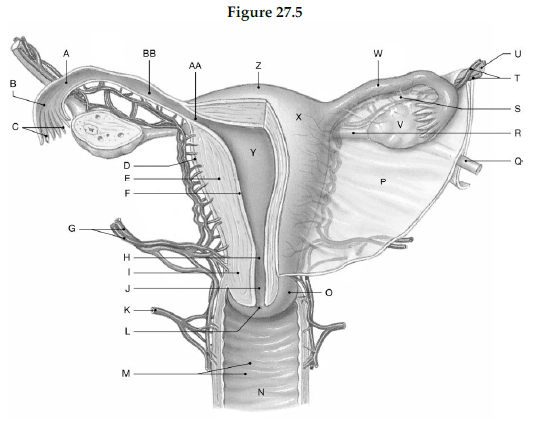Approximately one third of the erythrocyte cell volume is composed of ____
a. globulins
b. albumin
c. hemoglobin
d. fibrinogen
c
You might also like to view...
Using the figure below, identify the labeled part.

1) Label A: ______________________________
2) Label B: ______________________________
3) Label C: ______________________________
4) Label D: ______________________________
5) Label E: ______________________________
6) Label F: ______________________________
7) Label G: ______________________________
8) Label H: ______________________________
9) Label I: ______________________________
10) Label J: ______________________________
11) Label K: ______________________________
12) Label L: ______________________________
13) Label M: ______________________________
14) Label N: ______________________________
15) Label O: ______________________________
16) Label P: ______________________________
17) Label Q: ______________________________
18) Label R: ______________________________
19) Label S: ______________________________
20) Label T: ______________________________
21) Label U: ______________________________
22) Label V: ______________________________
23) Label W: ______________________________
24) Label X: ______________________________
25) Label Y: ______________________________
26) Label Z: ______________________________
27) Label AA: ______________________________
28) Label BB: ______________________________
Mucous connective tissue is found only in
A. the umbilical cord. B. certain bones of the skull. C. serous fluid. D. the cartilage of the nose. E. fibers of the respiratory system.
Parturition includes delivery of both the infant and the placenta
Indicate whether the statement is true or false
Which of the drug treatments listed below is INCORRECTLY matched to a mode of action in treating hypertension?
A. alpha-adrenergic receptor blockers - reduce TPR by decreased stimulation of arteriolar smooth muscle B. beta-adrenergic receptor antagonists - reduce cardiac output by slowing heart rate and reducing contractility C. antagonists of parasympathetic receptors - reduce TPR by decreased stimulation of arteriolar smooth muscle D. angiotensin-converting enzyme (ACE) inhibitors - reduce TPR by reducing angiotensin II concentrations E. diuretics - reduce blood volume by increasing excretion of sodium and water in urine F. calcium channel blockers - reduce speed and force of contraction in vascular smooth muscle G. ACE inhibitors - lowers peripheral resistance by promoting vasodilation